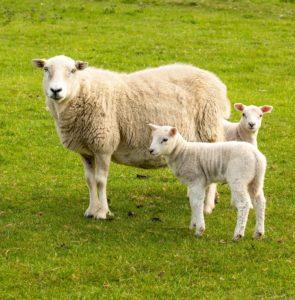Having invested in your grass it is important to get the grazing pressure right to ensure that available forage matches sheep requirements as closely as possible.
Throughout the growing season it is important to carefully manage grazing pressure to ensure both grass quality and high forage utilisation – getting animals to eat as much as possible of what is grown. Naturally there will need to be some adjustments throughout the grassgrowing season, depending on weather and other external factors but, get your grazing pressure and your residuals right, and your fields will be fit to regrow leafy, high quality, nutritious grass again and again.
Leafy grass can be well over 20% CP and have an ME of 11.5MJ/kg DM. The relationship between the D value of a grass to ME is 0.16. To have 11.5MJ/kg DM available, a grass plant must be 71.8% digestible. Managing grazing heights closely means that a sward is more likely to maintain its leafy growth and not become too mature and put out a seed head, which will reduce overall digestibility and affect the level of energy and protein available to the grazing sheep. Managing grass to the advised heights, particularly for ryegrass, will maintain the levels of live fresh leaf up to the three-leaf stage and minimise both seed heads and the gathering of older, dead unpalatable material at the base of the sward.
Correcting high grazing pressure
If grazing pressure becomes too high – e.g., if there are too many animals grazing the same area of grass for too long – the result will be short pasture stubble, sheep are forced to consume poorer quality forage, leading to lowered performance. Periods of excessively high grazing pressure will result in decreased grass production, slow regrowth and a plant becoming depleted of carbohydrate reserves. The persistency of the sward and its ability to grow away in spring will also be considerably reduced. The most effective solution is to remove some sheep or buffer feed with silage or concentrate.
Correcting low grazing pressure
With low grazing pressure, animal gain per head per day will typically be higher but production levels per acre will be poor. Low grazing pressure is likely to result in wasted forage. Where there is a need to increase grazing pressure, this can be achieved by intensifying the stocking rate or, a paddock/ field can be taken out of the grazing rotation to be silaged. If neither is possible or its been left too long, topping with a rotary mower or topper to remove tall, rank vegetation and encourage new growth can also be helpful. Removing this type of vegetation will also help maintain sheep foot health.
For more information or advice on maximising your homegrown forage and flock performance, get in touch with your local NWF Sales Specialist, call 01829 797 100 or shop online HERE.

